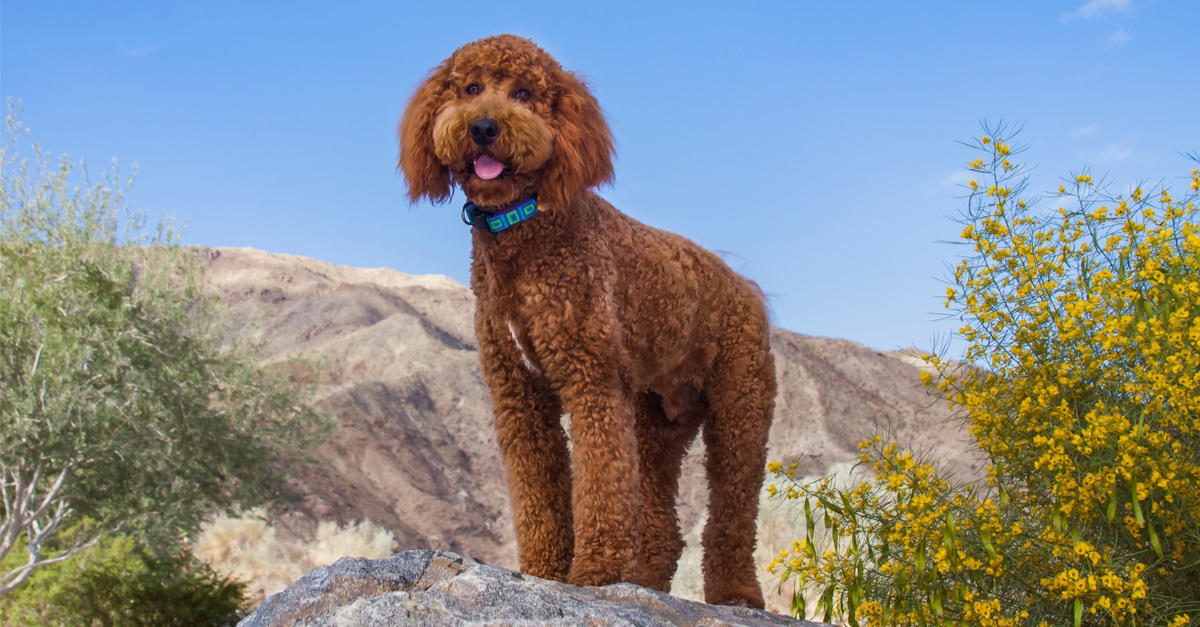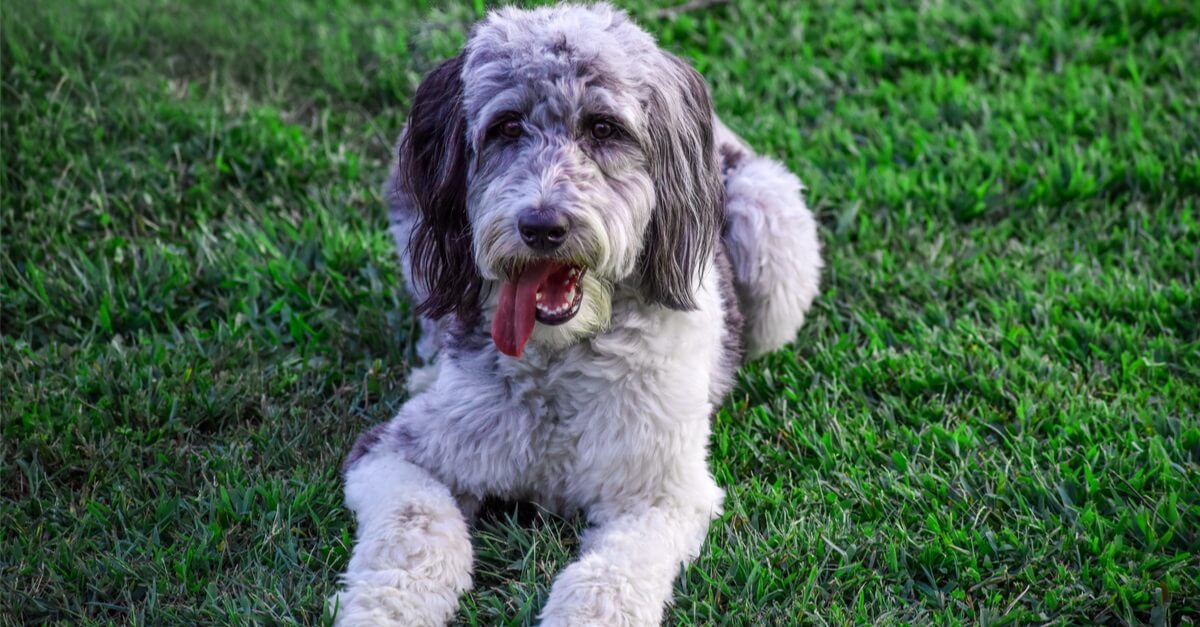Aussiedoodle vs Labradoodle
Labradoodles and Aussiedoodles are playful, energetic doodle breeds that make ideal family pets. They are often considered a great dog breed for children and many other popular, traditional breeds, including the American Cocker Spaniel, French Bulldog, Golden Retriever, Australian Shepherd, and the Irish Water Spaniel.
While doodle dog breeds make fantastic pets, some specific differences in their characteristics include behavior, temperament, and personality.
Labradoodles
Labradoodles are a crossbreed between a Labrador retriever and a standard poodle. They are well-known as friendly, playful dogs that enjoy swimming, retrieving items, and learning quickly. This hybrid breed inherits the gentle nature from its Labrador retriever parent dog and may vary in size based on the poodle parent breed.
This dog breed’s size varies based on whether they are bred with a toy, mini poodles, or standard poodle, and can range from up to 16 inches and 25 pounds, up to 24 inches in height and up to 65 pounds.
Aussiedoodles
Like Labradoodles, Aussiedoodles vary in size and weight based on the parent breeds. A Standard Aussiedoodle can weigh up to 70 pounds and can easily reach over 20 inches in height. They are natural herders, which makes them ideal for families, and great caretakers. While Labradoodles are more calm and gentle, Aussiedoodles tend to be energetic and rowdy at times.

Physical Features of Aussiedoodles vs Labradoodles
Each dog breed has similar characteristics and variations, depending on the poodle parent and inherited traits from both parent breeds. Both poodle mix breeds can range from a smaller size, up to ten inches in height, to a medium stature of up to 70 pounds.
Coat Texture and Color
Aussiedoodles and Labradoodles are low shedding breeds and come in various coat colors and blends, with curly and wavy coats. Aussiedoodles tend to have more vibrant colors and patterns, including tri-color blends that include red, brown, gray, blue, black, white, cream, apricot, and fawn.
Labradoodles tend to have fewer color variations, though you’ll find their curly coat colors come in blends of white, cream, gold, yellow, red, brown, and black. Both breeds have wavy or curly coats, which require regular grooming and care.
Grooming Requirements for Labradoodles vs Aussiedoodles
Labradoodles and Aussiedoodles require the same high maintenance level to maintain their curly coat. Whether you visit a professional groomer or care for your dog’s fur at home, it’s also essential to
Behavior and Temperament
Both doodle breeds are famous for their outgoing personalities and how well they interact with humans and other pets. They are not aggressive, though Aussiedoodle puppies tend to nip occasionally due to their herding tendencies.
Generally, the parent breed of each hybrid contributes to the good-natured temperament and loyalty to pet owners. As puppies, they can be a bit clumsy and highly energetic, which makes training important when they’re young.
Labradoodles were originally bred as hypoallergenic dogs, compatible with pet owners with allergies. Aussiedoodles were bred for herding and working dogs, though both hybrid breeds are intelligent and make excellent therapy dogs.
You’ll also find that mixed dog breeds are highly perceptive and quick to pick up on emotions, including sudden changes. They are very intuitive and bond well with people and other animals, including birds, cats, and other small pets.
Health and Life Expectancy
Designer dog breeds tend to enjoy excellent health, though there is always a chance your dog may inherit a medical condition from one of the parent breeds. Generally, Australian Shepherds, Golden retrievers, and various poodle mix breeds may develop hip joint looseness, weakness in their joints, and arthritis. Other common conditions that can develop include cataracts and epilepsy.
You’ll find that most hybrid poodle mix breeds enjoy excellent health due to the unique mix of genetics. They live between 15 and 18 years, with a proper dog food diet and regular veterinarian care.
Having access to all the breed information, including the specific parent breeds, will improve your dog’s chances of receiving the best care and support throughout their lives.
Training Labradoodles vs Aussiedoodles
The Standard Aussiedoodle and Standard Labradoodle breeds are easy to train and eager to please humans. Generally, Labradoodles are more receptive to training, especially as a puppy, whereas Aussiedoodles are stubborn, though they enjoy socializing with humans and respond well over time.
Labradoodles and Aussiedoodles make ideal therapy dogs and love interacting and helping humans with various tasks. While Aussiedoodles are better at herding and protecting, Labradoodles are more comforting and gentler.
Both dogs adapt well to various environments and thrive outdoors, which is essential to their development during training. They also train well with socializing and rewards.

Tips for Adopting an Aussiedoodles vs Labradoodles
When you’re ready to adopt an Aussiedoodle or Labradoodle, getting familiar with each hybrid breed and the type of dog you’re looking to welcome into your family is essential. There are many sizes and types to consider, including a Miniature Aussiepoo, Toy Aussiedoodle, or a Standard Labradoodle. It’s essential to take these steps when choosing a puppy for your home:
- Adopt your Aussiedoodle puppy or Labradoodle from a reputable breeder
- Get familiar with the diet, exercise requirements, and training needs for each breed
- Inquire about the parent breeds of your specific mixed breed puppy, including the parent poodle size and type, and the background of the Australian Shepherd or Labrador Retriever
Summary
Aussiedoodles and Labradoodles are compatible dogs for families and individuals who enjoy social, active pets that provide emotional support and loyalty. You’ll find many varieties of these mixed breeds, from standard-sized doodles to Mini Labradoodles and Aussiedoodles.
Overall, Labradoodles are best for new pet owners, as they are calmer and more initially receptive to training as puppies. You’ll find that both breeds adapt well to most living spaces, and make excellent pets, whether you have a quiet home in the countryside or live in an urban space with other pets.